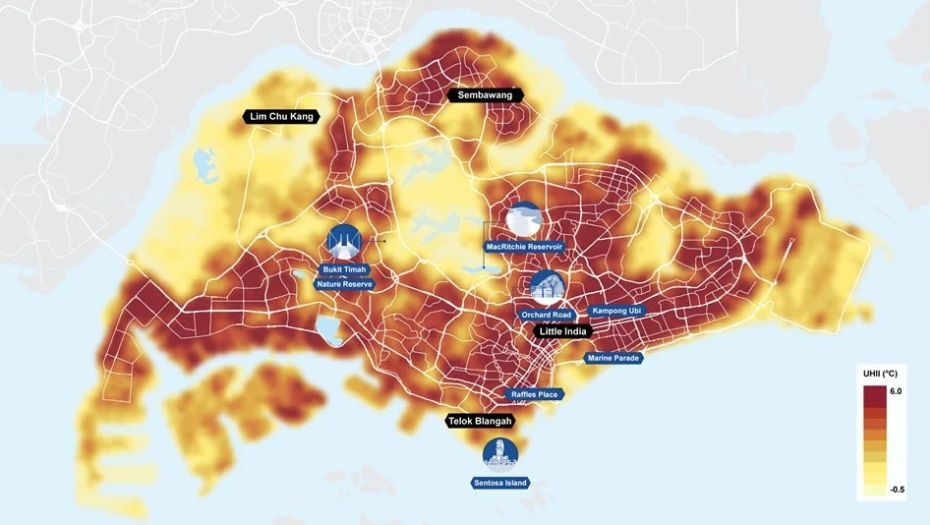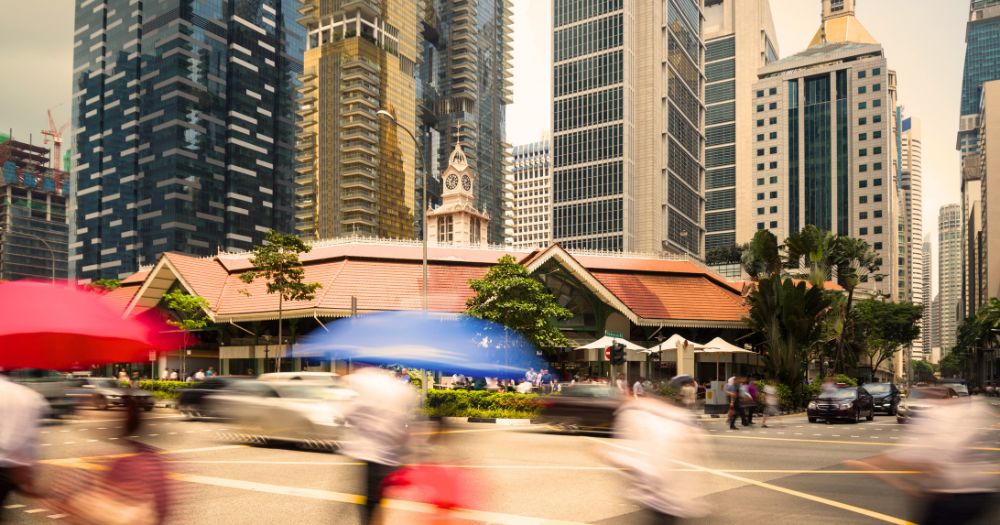While Singapore is known for its hot climate, not all parts of the sunny island are built the same.
A recent study revealed that the Central Business District (CBD) is one of the warmest regions in Singapore, while Upper Peirce Reservoir Park is one of the coolest.
Between them, the temperature difference can be as high as 6.5°C.
Hottest areas are in CBD
To investigate temperature differences around Singapore, sustainable development consultancy Arup looked at a particular day — May 13, 2022.
While May is usually a warm month, on that day, Singapore also recorded its highest ever temperature for the month at 36.7°C.
The warmest spot in Singapore was in the CBD.
The study noted that the area has 92 per cent hard, impermeable surface cover, and only six per cent vegetation cover.
These factors, along with its densely packed tall buildings and a high population density, lead to the CBD experiencing the most severe Urban Heat Island (UHI) effect.
The UHI effect describes the phenomenon where urban areas are warmer than rural areas due to heat generated from human activities and urban structures such as buildings, roads and vehicles trapping and releasing heat into the environment.
On May 13, 2022, the UHI effect raised temperatures at the CBD by 6°C.
Not just high rise areas
Because of the UHI effect, areas with tall, closely packed buildings like Raffles Place, Shenton Way and Lau Pa Sat were warmer.
But the study also discovered that areas from historical low-rise streets like Telok Ayer and Amoy Street were also literal hot spots that were 6°C warmer than their "rural surroundings".
This is despite these areas having low-rise buildings, green spaces and being in close proximity to Marina Bay.
The study attributed this to these streets being surrounded by high-rise urban developments that block the cooling effect from the nearby coast, and the dark terracotta roofs of the adjoining shophouses on the streets absorbing heat from the sun.
The heat is transferred to the air around the buildings, and for low-rise buildings, the warmth is keenly felt by pedestrians.
Outside of the CBD, there were also some neighbourhoods that experienced a temperature difference of above 5°C compared to their surroundings.
These included industrial zones like Kampong Ubi, areas with high population density in Rochor and Marine Parade, areas within Orchard, as well as Sembawang.
Coolest spot in Singapore
The study also found that the CBD was 6.5°C warmer than the coolest area in Singapore on that day, which was Upper Peirce Reservoir Park.
88 per cent of the park is covered with water and the remaining 12 per cent is covered with vegetation.
The study noted that these cool zones are mostly located in areas with forests or reservoirs, such as the central catchment area, vegetated areas in Lim Chu Kang, Sungei Buloh Wetland Reserve, as well as the region near Khatib Bongsu.
 Image by Arup.
Image by Arup.
Singapore is getting warmer, faster
Singapore is heating up twice as fast as the rest of the world, according to the Meteorological Service Singapore (MSS).
Over the past decade, temperatures have increased by 0.25°C.
By the end of the century, the island’s average daily maximum temperatures could climb as high as 37°C.
This can be attributed to climate change, and the UHI effect.
The group highlighted that nature features have a key role to play in reducing the temperature of its surroundings.
The study looked at other major cities such as Cairo, London, Los Angeles, Madrid, Mumbai, and New York.
In the majority of cities, the hottest spots had less than six per cent vegetation cover.
The coolest spots in most cities had over 70 per cent vegetation cover and were found almost entirely in parks, away from residential and commercial areas, found Arup.
To help cool cities, Arup recommended increasing tree canopy cover, creating more permeable surfaces, and using white or reflective roofs to passively cool the buildings and reduce the need for air conditioning.
Related stories
Top images via Canva.

If you like what you read, follow us on Facebook, Instagram, Twitter and Telegram to get the latest updates.



